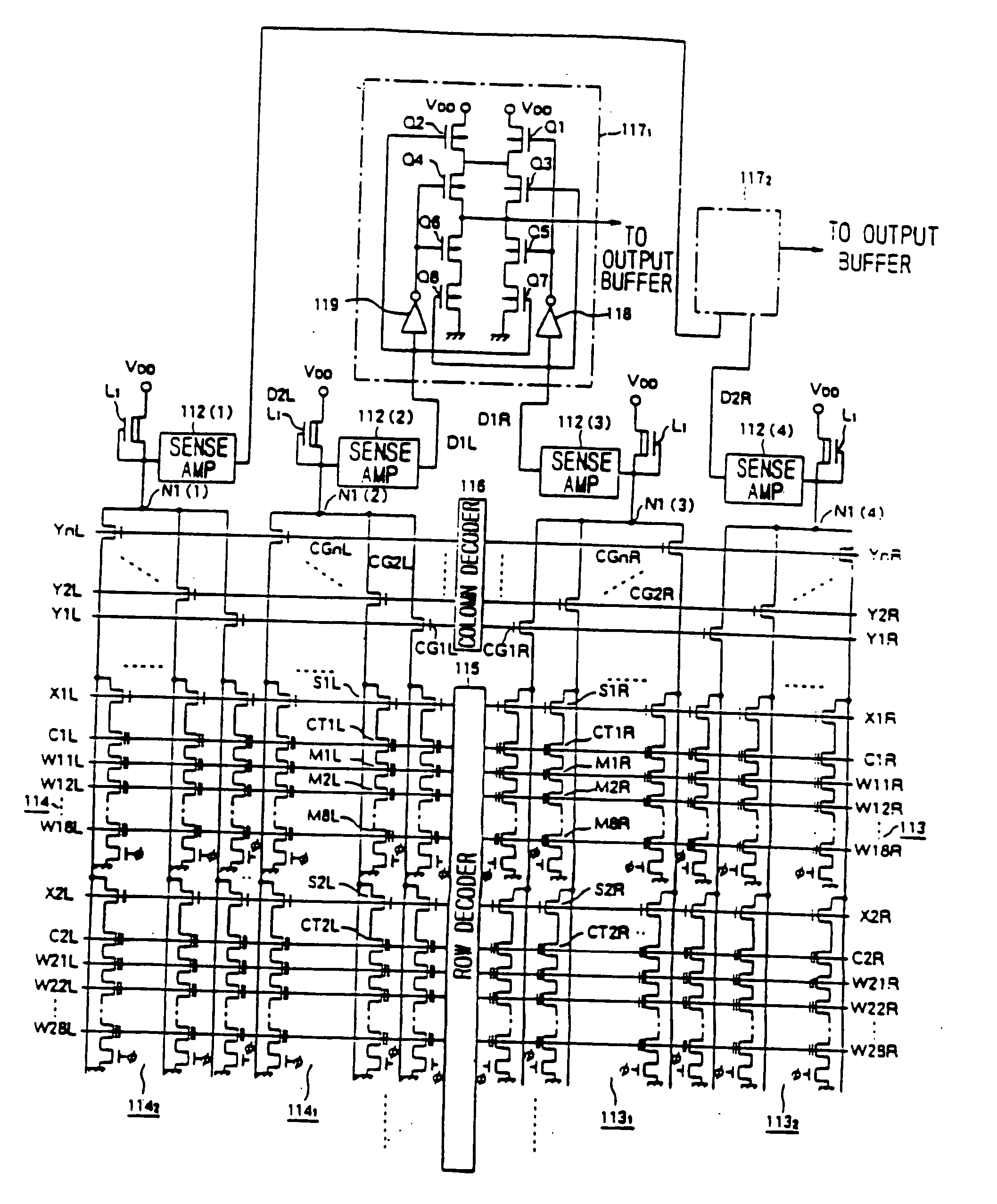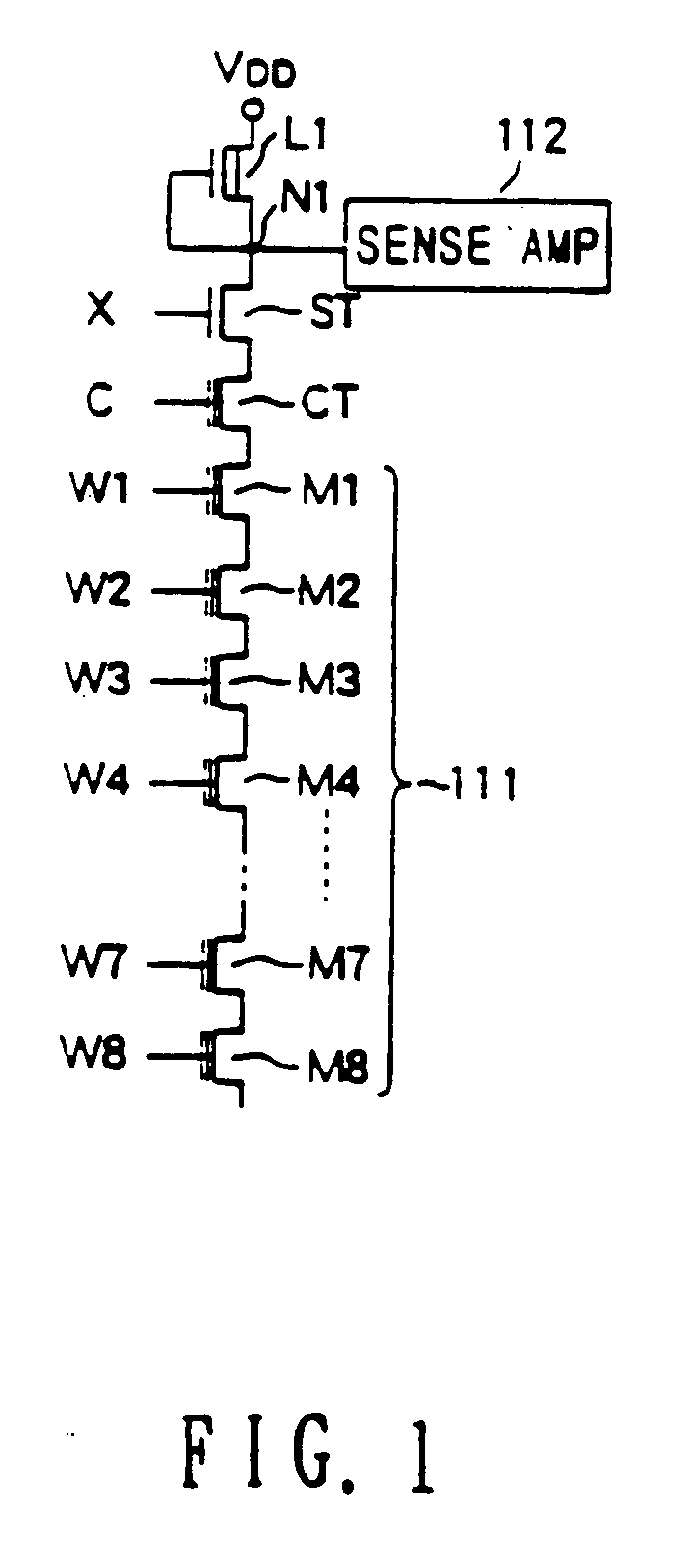Non-volatile semiconductor memory device and data programming method
a technology of non-volatile semiconductors and memory cells, which is applied in the direction of static storage, digital storage, instruments, etc., can solve the problems of dispersion of the electric injection rate of the floating gate of the memory cell, and achieve the effect of improving the data read speed
- Summary
- Abstract
- Description
- Claims
- Application Information
AI Technical Summary
Benefits of technology
Problems solved by technology
Method used
Image
Examples
Embodiment Construction
[0081] A first embodiment of the first aspect of the present invention will be described hereinbelow with reference to the drawings. FIG. 1 is a circuit in which a bit checking transistor CT whose conduction state is controlled by signal C is connected between the select transistor ST and the memory cell M1. The bit checking transistor stores whether a memory cell having a negative threshold voltage, which is included the other memory block which is different from the memory block including this bit checking transistor, corresponds to a logic “0” or a logic “1”. In each of the memory blocks, the memory cell having the negative threshold voltage corresponds to a logic “1” and the memory cell having the positive threshold voltage corresponds to a logic “0” if the number of the data of a logic “1” are larger than the number of the data of a logic “0”, on the other hand, the memory cell having the negative threshold voltage corresponds to a logic “0” and the memory cell having the posit...
PUM
 Login to View More
Login to View More Abstract
Description
Claims
Application Information
 Login to View More
Login to View More - R&D
- Intellectual Property
- Life Sciences
- Materials
- Tech Scout
- Unparalleled Data Quality
- Higher Quality Content
- 60% Fewer Hallucinations
Browse by: Latest US Patents, China's latest patents, Technical Efficacy Thesaurus, Application Domain, Technology Topic, Popular Technical Reports.
© 2025 PatSnap. All rights reserved.Legal|Privacy policy|Modern Slavery Act Transparency Statement|Sitemap|About US| Contact US: help@patsnap.com



